DOI:
https://doi.org/10.14483/23448393.16931Published:
2020-10-02Issue:
Vol. 25 No. 3 (2020): September - DecemberSection:
Special Section: Best Extended Articles - WEA 2015Análisis, diseño y simulación multifísica de una antena Fotoconductora Terahertz usando el método de elementos finitos
Analysis, Design, and Multi-physics Simulation of a Terahertz Photoconductive Antenna Using the Finite Element Method
Keywords:
COMSOL Multiphysics, different geometry, high-frequency structure, terahertz antenna (en).Keywords:
COMSOL Multiphysics, geometr´ıas diferentes, estructura de alta frecuencia, antena de terahercios (es).Downloads
References
L. Hou, S. Chen, Z. Yan and W. Shi, “Terahertz radiation generated by laser induced plasma in photoconductive antenna”, IEEE Journal of Quantum Electronics, vol. 49, no. 9, pp. 785–789, 2013. http://doi.org/10.1109/JQE.2013.2275019
D. Turan, S. C. Corzo-Garcia, E. Castro-Camus and M. Jarrahi, “Impact of metallization on the performance of plasmonic photo-conductive terahertz emitters”, Microwave, MTT-S International Symposium, pp. 575–577, 2017. http://doi.org/ 10.1109/MWSYM.2017.8058631
Y. S. Lee, “Basic Theories of Terahertz Interaction with Matter”, in Principles of Terahertz Science and Technology, pp. 1–40, 2008. https://doi.org/10.1007/978-0-387-09540-0_2
N. T. Yardimci and M. Jarrahi, “Nanostructure-Enhanced Photoconductive Terahertz Emission and Detection”, Nano-micro Small, vol. 14, no. 44, pp. 180-243, 2018. https://doi.org/10.1002/smll.201802437
Y. S. Lee, Principles of Terahertz Science and Technology. Springer, 2009. https://doi.org/10.1007/978-0-387-09540-0
J. Zhang, M. Tuo, M. Liang, X. Wang and H. Xin, “Contribution assessment of antenna structure and in-gap photocurrent in te-rahertz radiation of photoconductive antenna”, Journal of Applied Physics, vol. 124, no. 5, p. 053107, 2018. https://doi.org/10.1063/1.5038341
N. Khiabani, Y. Huang, Y. C. Shen and S. Boyes, “Theoretical Modeling of a Photocon-ductive Antenna in a Terahertz Pulsed Sys-tem”, IEEE Transactions on Antennas and Propagation, vol. 61, no. 4, pp. 1538–1546, 2013. https://doi.org/10.1109/TAP.2013.2239599
J. A. Dionne, L. A. Sweatlock, H. A. Atwater and A. Polman, “Planar metal plasmon waveguides: frequency-dependent dispersion, propagation, localization, and loss beyond the free electron model”, Physical Review B, vol. 72, no. 7, pp. 75-90, 2005. https://doi.org/10.1103/PhysRevB.72.075405
E. Moreno, M. F. Pantoja, F. G. Ruiz, J. B. Roldán and S. G. García, “On the Numerical Modeling of Terahertz Photoconductive Antennas”, Journal of Infrared, Millimeter and Terahertz Waves, vol. 35, no. 5, pp. 432–444, 2014. https://doi.org/10.1007/s10762-014-0060-5
N. T. Yardimci, S. H. Yang, C. W. Berry and M. Jarrahi, “High-Power Terahertz Generation Using Large-Area Plasmonic Photocon-ductive Emitters”, IEEE Transactions on Terahertz Science and Technology, vol. 5, no. 2, pp. 223–229, 2015. https://doi.org/10.1109/TTHZ.2015.2395417
S. H. Yang, M. R. Hashemi, C. W. Berry and M. Jarrahi, “7.5% Optical-to-Terahertz Conversion Efficiency Offered by Photocon-ductive Emitters With Three-Dimensional Plas-monic Contact Electrodes”, IEEE Transactions on Terahertz Science and Technology, vol. 4, no. 5, pp. 575–581, 2014. https://doi.org/10.1109/TTHZ.2014.2342505
C. W. Berry, N. Wang, M. R. Hashemi, M. Unlu and M. Jarrahi, “Significant performance enhancement in photoconductive te-rahertz optoelectronics by incorporating plasmonic contact electrodes”, Nature Communications, vol. 4, no. 1, p. 1622, 2013. https://doi.org/10.1038/ncomms2638
N. Burford and M. El-Shenawee, “Computational modeling of plasmonic thin-film terahertz photoconductive antennas”, Jour-nal of the Optical Society of America B, vol. 33, no. 4, p. 748, 2016. https://doi.org/10.1364/JOSAB.33.000748
Z. Piao, M. Tani and K. Sakai, “Carrier Dynamics and Terahertz Radiation in Photoconductive Antennas”, Japanese Journal of Applied Physics, vol. 39, no. 1, pp. 96–100, 2000. https://doi.org/10.1143/JJAP.39.96
L. Duvillaret, F. Garet, J. F. Roux and J. L. Coutaz, “Analytical modeling and optimization of terahertz time-domain spectroscopy experiments, using photoswitches as antennas”, IEEE Journal of Selected Topics in Quantum Electronics, vol. 7, no. 4, pp. 615–623, 2001. https://doi.org/10.1109/2944.974233
K. Ioannidi, C. Christakis, S. Sautbekov, P. Frangos and S. K. Atanov, “The Radiation Problem from a Vertical Hertzian Dipole Antenna above Flat and Lossy Ground: Novel Formulation in the Spectral Domain with Closed-Form Analytical Solution in the High Frequency Regime”, International Journal of Antennas and Propagation, vol. 2014, pp. 1–9, 2014. https://doi.org/10.1155/2014/989348
J. Ren, Z. Jiang, M. I. Bin Shams, P. Fay and L. Liu, “Photo-induced electromagnetic band gap structures for optically tunable microwave filters”, Progress in Electromagnetics Research, vol. 161, pp. 101–111, 2018. https://doi.org/10.2528/PIER17120306
P. Johari and J. M. Jornet, "Packet size optimization for wireless nanosensor networks in the Terahertz band", in IEEE Interna-tional Conference on Communications (ICC), Kuala Lumpur, 2016. https://doi.org/10.1109/ICC.2016.7510603
J. M. Jornet and I. F. Akyildiz, “Graphene-based Plasmonic Nano-Antenna for Terahertz Band Communication in Nanonetworks”, IEEE Journal on Selected Areas in Communications, vol. 31, no. 12, pp. 685-694, 2013. https://doi.org/10.1109/JSAC.2013.SUP2.1213001
T.Y. Jourau, M. Bashirpour, M. Forouzmehr, S. Hosseininejad, M. Kolahdouz and M. Neshat, “Improvement of Terahertz Photo-conductive Antenna using Optical Antenna Array of ZnO”, Scientific Reports, vol. 9, no. 1414, 2019. https://doi.org/10.1038/s41598-019-38820-3
C. Liu, L. Du, W. Tang, D. Wei, J. Li, L. Wang, G. Chen, X. Chen and W. Lu, “Towards sensitive terahertz detection via thermoe-lectric manipulation using graphene transistors”, NPG Asia Materials, vol. 10, pp. 318-327, 2018. https://doi.org/10.1038/s41427-018-0032-7
H. Hubers, M. F. Kimmitt, N. Hiromoto and E. Brundermann, “Terahertz Spectroscopy: System and Sensitivity Considerations”, IEEE Transactions on Terahertz Science and Technology, vol. 1, no. 1, pp. 321-331, 2011. https://doi.org/10.1109/TTHZ.2011.2159877
S. Lepeshov, A. Gorodetsky, A. Krasnok, N. Toropov, T. A. Vartanyan, P. Belov, A. Alú and E. U. Rafailov, “Boosting Terahertz Photoconductive Antenna Performance with Op-timised Plasmonic Nanostructures”, Scientific Reports, vol. 8, no. 6624, 2018. https://doi.org/10.1038/s41598-018-25013-7
J. F. Federici, B. Schulkin, F. Huang, D. Gary, R. Barat, F Oliveira and D. Zimdars, “THz imaging and sensing for security applica-tions—explosives, weapons and drugs”, Semiconductor Science and Technology, vol. 20, no. 7, 2005. https://doi.org/10.1088/0268-1242/20/7/018
J. Alda, J. M. Rico-García, J. M. López-Alonso and G. Boreman, “Optical antennas for nano-photonic applications”, Semiconduc-tor Science and Technology, vol. 16, no. 5, 2005. https://doi.org/10.1088/0957-4484/16/5/017
E. Üstün, Ö. Eroglu, U. M. Gür and Ö. Ergül, “Investigation of nanoantenna geometries for maximum field enhancements at optical frequencies”, in 2017 Progress in Electromagnetics Research Symposium-Spring (PIERS), St. Petersburg, 2017, pp. 3673-3680. https://doi.org/10.1109/PIERS.2017.8262396
How to Cite
APA
ACM
ACS
ABNT
Chicago
Harvard
IEEE
MLA
Turabian
Vancouver
Download Citation
Recibido: 1 de junio de 2020; Revisión recibida: 31 de agosto de 2020; Aceptado: 15 de septiembre de 2020
Abstract
Context:
The study of nanotechnology has shown great advances, which include research and exploration of the TeraHertz (THz) region, where one of the most common approaches is the use of photoconductive antennas (PCA) due to the intrinsic properties of their emission the non-destructive nature of this type of radiation.
Method:
This paper describes the concept of antenna its radiation principles, the mathematical foundations, the material used for radiation, and the adjustment of the parameters to find a result of the pulse in THz by using the finite element method, accessible in the COMSOL Multiphysics software.
Results:
The result of a computational modeling is presented, which studies the behavior of a PCA, where the input of the chosen model corresponds to the geometry and material of the antenna, thus showing the concentration of the electric field in the GAP zone of the dipole and the substrate of the semiconductor.
Conclusions:
Given the theoretical foundations that describe the behavior of PCAs in THz, it was possible to configure parameters such as the geometry of the antenna, the laser to be used, and the construction materials to achieve the generation of a photocurrent peak in the order of 0,1-1,2 THz.
Keywords:
COMSOL Multiphysics, different geometry, high-frequency structure, terahertz antenna.Resumen
Contexto:
El estudio de la nanotecnología ha mostrado grandes avances que incluyen la investigación y exploración de la región Terahertz (THz), donde uno de los enfoques más comunes es el uso de antenas fotoconductoras (PCA) debido a las propiedades intrínsecas de su emisión y a la naturaleza no destructiva de este tipo de radiación.
Método:
Este artículo describe el concepto de antena, sus principios de radiación, los fundamentos matemáticos, el material utilizado para la radiación y el ajuste de los parámetros para encontrar un resultado del pulso en THz mediante el uso del método de elementos finitos, accesible en el software COMSOL Multiphysics.
Resultados:
Se presenta el resultado de un modelado computacional que estudia el comportamiento de una PCA, donde la entrada del modelo escogido corresponde a la geometría y al material de la antena, mostrando así la concentración del campo eléctrico en la zona GAP del dipolo y del substrato del semiconductor.
Conclusiones:
Dados los fundamentos teóricos que describen el comportamiento de las PCA en THz, fue posible configurar parámetros como la geometría de la antena, el láser a usar y los materiales de construcción para lograr la generación de un pico de fotocorriente en el orden de 0,1-1,2 THz.
Palabras clave:
COMSOL Multiphysics, geometrías diferentes, estructura de alta frecuencia, antena de terahercios.Introduction
Terahertz photoconductive antennas (PCA) have been rapidly growing as a research field during the last year, due to the vast spectrum of configurations for each of their building parameters. The main research trend has been to optimize their configuration. In this field, each parameter has been investigated independently, so the real challenge appears when all parameters are interacting simultaneously. In this study, we modeled all parameters at the same time to know which configuration yields the best results according the pulse and power of the signal.
A PCA antenna was simulated to improve its power efficiency. To achieve this goal, the COMSOL Multiphysics software was used, in which the Maxwell wave equation for optical interaction, the Poisson equations, and the derivative derivative diffusion of the electrical response were combined to determine a numerical solution.
The paper is organized as follows: section 2 introduces the theory and concept behind the proposed THz-PCA design, as well as defining the computational domain and methodology; section 3 contains a brief state of art; section 4 presents the validation of the model with both computational and experimental work from the literature, and it shows the results of the proposed THz-PCA design with other designs from previous studies; and section 5 summarizes and concludes and presents theconclusions of this research.
Background
In recent years, it has been determined that the interaction between the different properties of matter produces Terahertz radiation. These signals are significantly useful due to the size of the devices that produce them, as well as their frequency and power. The field of telecommunications has shown that the need to generate high-frequency signals involves the challenge of building larger active equipment, which is why most of the infrastructure occupies large spaces, which limits the spectrum of applications. Therefore, the generation of Terahertz radiation from small devices offers a wide variety of potential applications in the fields of health, safety, and images, among others.
Now, the interaction between different materials and techniques in this context has been a matter of research. There are two ways to generate THz radiation: by means of solid and optical state methods, the latter of which was used in this article.
An advantage of the use of the optical state technique is that it can be implemented at room temperature. Optical state techniques can be classified into optical rectification and generation with photoconductive materials, the latter being more efficient when using laser oscillators [1].
Thus, PCAs have emerged as conventional devices to emit THz radiation from the excitation of an oscillator laser, which has evolved over the years into powerful laser systems generally based on titanium-sapphire alloys [2].
Antenna
A PCA consists of an excitation laser that impinges on a surface in time lapses of the order of femtoseconds (fs). The surface, manufactured with photoconductive material, receives a constant electric potential to polarize the flow of electrons. Two metallic planar electrodes are on the photoconductive material, which can be a semiconductor substrate such as semi-isolated gallium arsenide (SI-GaAs). It is separated by an area with a defined shape, which is the geometry of the antenna, one of the parameters that were modified through modeling in this article.
The substance with which the antenna is manufactured, also called substrate, must comply with picosecond life times for the carriers, which means high mobility and high inverse breaking voltage for the flow of electrons generated in the voltage source connected to the antenna [3].
The attenuation in this type of radiation is very high, which is why it is necessary to use highpower sources to propagate the pulse in the air. The use of this type of sources has increased the price of this technology, thus hindering its implementation in small laboratories. Some studies have reported radiation levels of up to 60 THz [4]. However, the efficiency of these antennas is 0,1% by default, with an excitation of the lasers of 1-8 mW.
On the other hand, the signal-to-noise ratio and the dynamic range based on photoconductive antennas at the THz frequency is based on the quality and performance of the emitter, specifically on the amount of output power. As mentioned above, the power of the antenna depends on the source of voltage supplied to the system, which implies a high power consumption and a difficulty dissipating the heat produced during this process.
This scenario reveals the need to investigate the requirements for efficiency, as well as to identify topologies and optimal excitation parameters.
The potential applications of these devices have also required the use of different types of substrate, electrode geometry, polarization voltages, and different optical powers, reporting different efficiencies for each case.
Following this line of research, this article seeks to determine the parameters of photoconductive antennas through simulation techniques in order to improve their efficiency. The typical configuration of this concept can be seen in Fig. 1.
Figure 1: THz radiation generation diagram [5]
Principles of radiation
Electromagnetic radiation is in the frequency range of approximately 0,1-10 THz. This is between the frequencies of radio waves and those of infrared light. As the wavelengths are in the range of 0,03-1 mm and often below 1 mm, THz radiation is also sometimes called sub-millimeter radiation.
PCAs take advantage of the increase in conductivity when exposed to light, but their behavior is the opposite in the absence of light. Photoconductivity is produced due to the increasing numbers of electron carriers and gaps generated by photons. This happens during the picoseconds of needed to generate a pulse in the terahertz frequency [6]. Normally, this kind of pulses are called ultra-short pulses, which can be generated by an extremely short laser. The maximum duration of the pulse is dozens of peak-seconds, and the frequency is in the range of femtoseconds. This range can be extended using non-linear frequency conversion techniques [1]. The mobility of the carriers increases the efficiency of the emission of the signal in the THz frequency because the carriers can accelerate more quickly.
An important characteristic of semiconductors that should be considered in this type of applications is that the carriers must have a short life time; given the fact that being faster, they will generate shorter THz pulses and, therefor, a greater bandwith in spectral terms [7].
Math
Each of the construction parameters of the antenna has a physical behavior, which is a mathematical expression that allows obtaining the simulation results. In this section, the equations that describe the meters of the antenna will be explained.
The Poisson equation allows describing the steady state in any part of the semiconductor in the electrostatic field.

The Poisson equation in the time domain is as follows:

The steady-state solution provides the initial distribution of carriers and currents into the electrodes. The heterogeneous carrier mobilities in the semiconductor can also be found using this equation.
Electromagnetic waves are modeled in the frequency domain, when the effective wavelength is comparable with the sizes of the resonant and radiating structures, in this case, the antenna. The following expression raises the equation of the electromagnetic wave in terms of frequency.

The optical excitation process leads the atoms of the active medium to their excited state, thus causing a population inversion. The mathematical modeling of this effect can be evaluated by means of the following expression:

The field produced by the flow of electrons through the electrodes is modeled mathematically as follows:

Furthermore, the following expressions describe power flow in the different axes:



This expression describes the power flux density in unit units of
 :
:

The generation of the carrier is described below:

This is the diffusion model drift for electron concentrations:

As well as the diffusion model drift for the concentrations of the holes:

Finally, from the proposed system of equations, the recombination response is obtained. The electrical response is only considered for the Si-GaAs layer:

Plasmonic Light Concentrators
The combination of metal and a dielectric forms a material called plasmons. This material creates electromagnetic waves under the influence of light. The light that hits the metamaterial turns into shallow plasmonic polaritons, which are shorter in wavelength than the incident light. Plasmons are confined waves composed of electrons and plasma that are at the interface between a metal and a dielectric.
The direction of the initiating electromagnetic signal must match the direction of the surface plasmon wave, which can be determined from the metal and dielectric permittivity values. Therefore, modifying the shape of the metal could adjust the direction of both the electromagnetic and the plasmon waves [8]. In other words, the process of changing the shape of the metal allows a greater concentration of light near the space where the plasmon waves are located. Thus, the shape parameter, also called the geometry of the antenna, determines its efficiency, thus making the THz pulse power better in comparison to other possible approaches.
Starting from the operational basis of a typical antenna, different approaches are defined for the construction of a nanoantenna. These typical forms can be initially classified in two categories as shown in Fig. 2.
Figure 2: Typical antenna
From this first approach, antennas were built modifying the electrode shapes and their position.
These were PCAs based on plasmonic light concentrators, as shown Figure 3a, in this case, the surfaces where the light beam strikes are con-fined in a small space between the two electrodes. The surface surrounding the electrodes is the metal semi conductor [4]. Another approach for building photoconductive antennas is based on plasmonic contact electrodes, as shown in Figures 3b, 3c, and 3d. The main goal of this approach consists of increasing optical absorption near the contact electrodes.
Figure 3: Design PCA based on plasmonic
State of the art
Terahertz radiation has been widely studied in recent years, given its wide field of applications. There are important advances in the construction of photoconductive antennas according to their application. However, building an antenna is a difficult process mainly due to its size, components, and technology barrier. Therefore, computational modeling offers a good alternative to accomplish this process without an increase in costs. The mathematical principles of the steady model with a nonlinear function (Bernoulli) provide great tools to model the physical phenomena [9], and this equation was formulated by using COMSOL®.
The generation of frequencies in the THz band through optical processes can be classified into two techniques. The first one is called optical rectification and the second technique is based on photoconductor materials. The latter one is more efficient when using laser oscillators. The geometry of this photoconductor material could affect the THz pulse, which is why some researchers focus on the shape of the antenna.
Plasmonic contact electrodes are a novel design with a more effective separation and acceleration of photocarriers forming grating, with SI-GaAs and LT-GaAs substrates in each gap. This kind of geometry features efficient time-varying dipoles as a response to the laser incident [10].
Significant advances have been made in increasing the power efficiency of the THz pulse due to geometries that imply the three dimensions in the contact between electrodes. One of these cases shows that the efficiency of the antenna improved by 7,5% using a geometry with a jagged shape integrated with a logarithmic spiral on a LT-GaAs substrate [11].
There is also a different kinds of shape, which is composed of a photoconductor with a gap among both contacts, positive and negative, connected to a bowtie antenna. GaAs (LT-GaAs) is used for the substrate[(12].
According to the modeling of photoconductive antennas, a great variety of numerical and analytical models have been reported [7], [13], [14], in which it has been possible to distinguish, from the electromagnetic theory or from the transport phenomenon in semiconductors, the parameters involved in improving the efficiency of photoconductive antennas as THz emitters. Analytical models use transport model, to explain the generation of photocurrent in the photoconductive substrate of the antenna, which is responsible for the THz emission [15]. The electromagnetic phenomena, models with approximations to Hertzian dipoles have been reported using Maxwell’s equations [16], [17], and HFSS simulations that are widely used to measure the main parameters of the antennas, such as radiation patterns, input impedances, and efficiencies [6].
It is also important to consider that, given the growing interest in this field, the number of research groups has increased worldwide. This includes the THz spectroscopy division of the Helmholtz- Zentrum Dresden- Rossendorf research center in Dresden, Germany and the University of Cambridge’s group of applications in THz. This has led to a better positioning and higher impact of indexed journals on THz technology, such as the “IEEE Transactions on Terahertz Science and Technology” with 4,342 impact factors, ranked in the first quartile according to SCOPUS.
Analysis and design of a PCA
Exploration in the THz band has grown rapidly in recent decades [18]- [20]. There are ultrafast photoconductive antenna systems excited by laser pulses in times less than picoseconds to achieve the emission of THz waves [21]. As mentioned above, some of the advantages of using this technology are: operation at ambient temperature, high signal-to-noise ratio, and precise measurement of the magnitude and phase of the signal, as well as various applications such as pharmaceutical screening of polymorphous and hydrated forms [22], [23], detection of materials for surveillance and security schemes [22], [24], monitoring of metal processing and construction [2], [22], detection of cancerous tissues [25], absolute thickness measurements [26], and the characterization of materials [21], among others.
For the design process, the materials must be correctly selected and prepared depending on their properties. Here, it must be taken into account that they must not be ionizing and have a high water absorption to facilitate high reflectivity and complete opacity. To achieve operation in THz, lasers with pulses in femtoseconds must be used, which are sent to the polarized antenna to generate an excitation that activates the recombination and generation process of the carrier [5], [21].
Now, by using the equation of the electromagnetic wave in terms of frequency (3) and the incident field (4), the resulting field is obtained by means of (5), thus simulating the optical excitation of the femtosecond pulse and showing the component peaks of the electric field in both spatial and temporal terms. Once this is done, the vector components of the power density and its total flux can be calculated (9), arriving at the generation of the carrier with equation (10) and obtaining the recombination response through (13).
The objective of Table I is to present a compilation of various authors regarding the optical conversion to THz, the geometry of the antenna construction, the type of plasmonic structure, the gap space, the characteristics of the laser, the semiconductor substrate, the polarization voltage, and the dimensions and type of lens, in order to understand what is the response produced by each of the parameters of a PCA and their influence on improving the design and output power.
Table I: Table of construction parameters and design of PCAs

Conventional PCA simulation
Thanks to the development of specialized software to simulate physical phenomena, COMSOL is used in its finite element method (FEM) mode to facilitate troubleshooting and obtain more accurate currents in order to have numerical stability and values closer to reality.With this method, it is easy to couple different physics. Next, Fig. 4 shows each of the parameters included in the COMSOL tool.
Figure 4: PCA parameters in the COMSOL software
As well as the construction of the geometry dimensions, which can be seen in Fig. 5 and the definition of domains and material properties in Fig. 6.
Figure 5: Geometry dimensions of the PCA
Figure 6: Domains and material properties of PCA
Once this has been defined, the work domains, the conditions of impedance and periodicity are assigned, as shown in Figure 7.
Figure 7: Domains and material properties of the PCA
Then, the design of the PCA is simulated, observing the concentration of the electric field in the gap zone of the dipole (Fig. 8a), the concentration of electrons in the gap zone on the semiconductor substrate closest to the dipole anode (Fig. 8b), the concentration of holes with higher gap intensity of the distributed dipole in most of the semiconductor substrate (Fig. 8c), and the concentration of electric potential in the antenna’s anode and the semiconductor substrate given by the incident beam (Fig. 8d).
Figure 8: Conditions of impedance and periodicity of the PCA
Similarly, the resulting amplitude of the electric field (THz radiation vs. time) can also be observed in Figure 9.
Figure 9: Complete view of the photoconductive antenna
Figure 10: Electric field (THz radiation vs. time) of the PCA
Conclusions
In accordance with the proposed objective, it is possible to identify the excitation parameters that allow the generation of THz radiation using PCAs. These parameters were identified based on the state of the art described in this paper.
Similarly, it was also possible to reproduce the theoretical models that describe the behavior of photoconductive antennas, while also identifying the geometric model and the physicochemical behavior to understand the ideal topologies leading to the generation of the desired photocurrents, which are necessary for applications in the industry.
The analytical and mathematical modeling of this design is facilitated by using the COMSOL finite element solver, in which the equations involved are configured. Then, this this tool proceeds to simulate them, depending on the initial parameters that were configured to obtain the photocurrent peak. All the obtained results such as the concentration of electrons and holes in the semiconductor surface, its generated electric field, and, finally, the THz radiation peak, were identified and explained based on a conventional, theory-based photoconductor antenna solution, and it was possible obtain a photocurrent peak of the order of 0,1-1,2 THz, which shows that the application of the theories was satisfactory.
References
License
Copyright (c) 2020 oscar fabian corredor camargo, Diana Gonzalez Galindo, Cristhian Torres Urrea, Carlos Criollo Paredes, David Suarez Mora

This work is licensed under a Creative Commons Attribution-NonCommercial-ShareAlike 4.0 International License.
From the edition of the V23N3 of year 2018 forward, the Creative Commons License "Attribution-Non-Commercial - No Derivative Works " is changed to the following:
Attribution - Non-Commercial - Share the same: this license allows others to distribute, remix, retouch, and create from your work in a non-commercial way, as long as they give you credit and license their new creations under the same conditions.

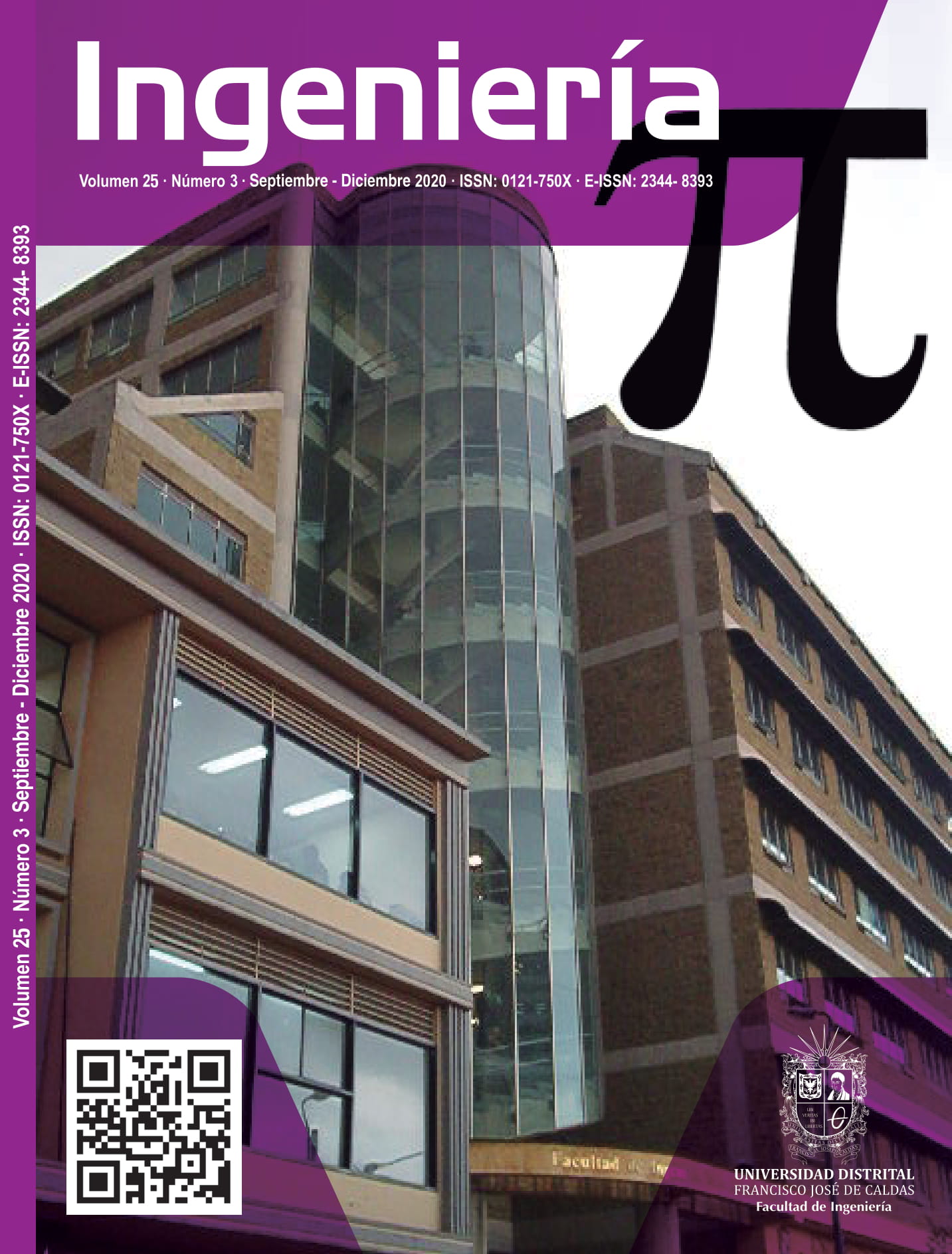
![THz radiation generation diagram [5]](https://revistas.udistrital.edu.co/index.php/reving/article/download/16931/version/12692/17276/105179/0121-750X-inge-25-03-378-gf1.jpg)
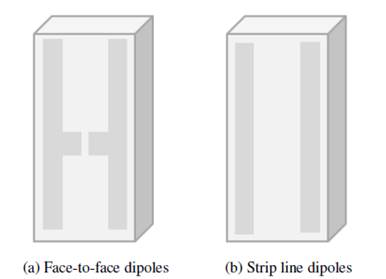

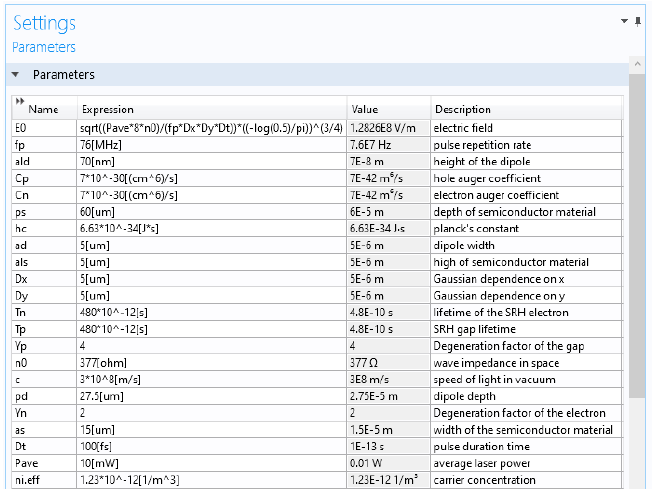

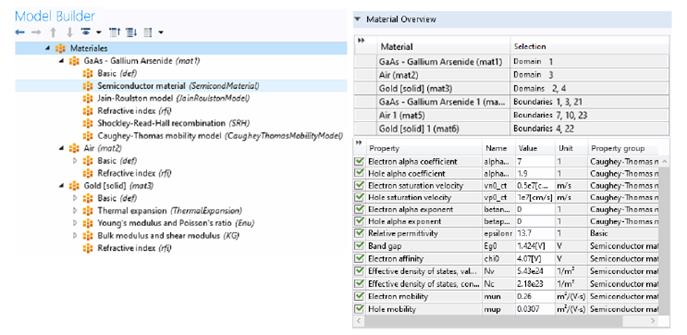
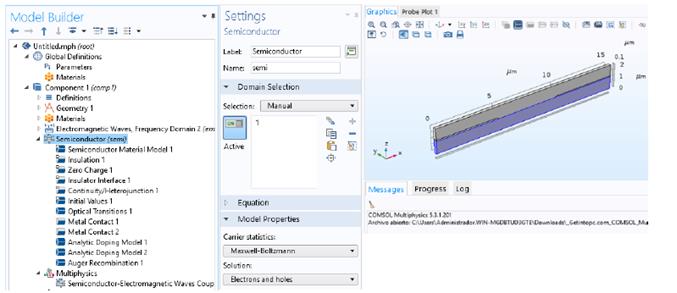

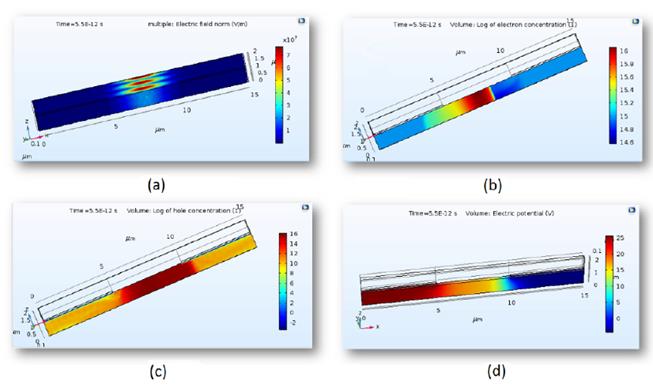
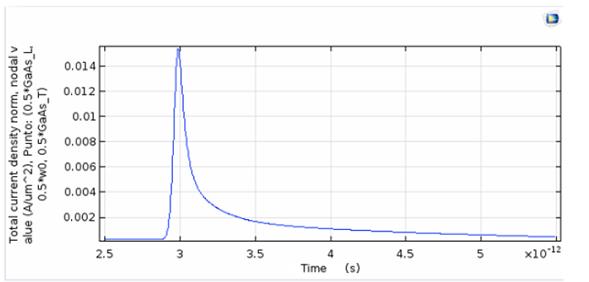



2.jpg)










